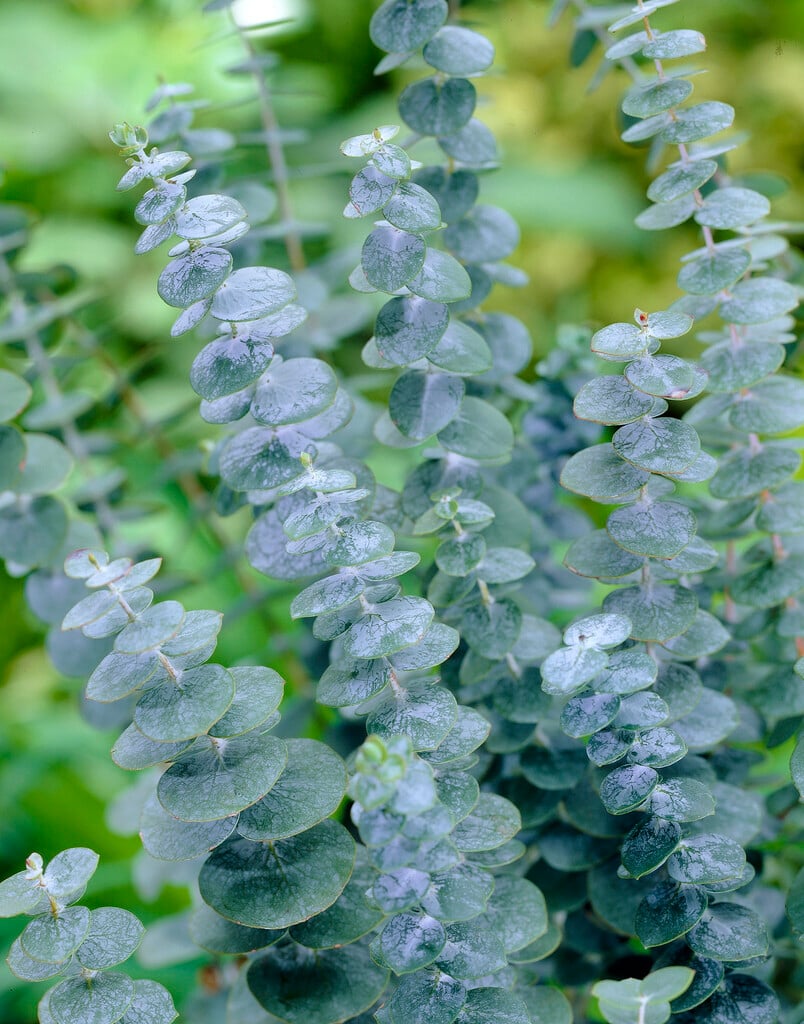Eucalyptus cinerea
Argyle apple
Evergreen tree, with a dense canopy of striking silver-blue foliage, about 10-15m tall. The bark is grey-brown over reddish-brown and vertically fissured. Glaucous, greyish-blue, rounded juvenile leaves to 8cm long and intermediate foliage, lasts on the tree for many years. and is covered in a highly ornamental white, waxy bloom. Adult folige is a dull, sage-green and sickle-shaped, but rarely appears. White flowers are produced in late spring, followed by funnel-shaped woody fruit. The foliage and wood is strongly fragrant of eucalyptus oil.
Size
Ultimate height
Higher than 12 metresTime to ultimate height
10–20 yearsUltimate spread
4–8 metresGrowing conditions
Moisture
Moist but well–drained, Well–drainedpH
Acid, NeutralColour & scent
| Stem | Flower | Foliage | Fruit | |
| Spring | White | Grey Silver White | ||
|---|---|---|---|---|
| Summer | Grey Silver Blue | |||
| Autumn | Grey Silver Blue | |||
| Winter | Grey Silver Blue |
Position
- Full sun
Aspect
South–facing or West–facing
Exposure
Sheltered Hardiness
H5Botanical details
- Family
- Myrtaceae
- Native to GB / Ireland
- No
- Foliage
- Evergreen
- Habit
- Spreading branched, Bushy
- Genus
Eucalyptus are evergreen trees or large shrubs, often fast-growing, some with attractive bark, most with aromatic foliage, and clusters of small, white, yellow or red flowers
- Name status
Correct
- Plant range
- Australia (New South Wales), Victoria
How to grow
Cultivation
Grows well in a sunny position in neutral to acid garden soils as long as they are well-drained. The plant can tolerate dryer soil conditions, but only once it has become well-established. See eucalyptus cultivation
Propagation
Propagate by seed at 13-18°C in spring and summer
Suggested planting locations and garden types
- Architectural
- Coastal
- Mediterranean climate plants
- Hedging and screens
Pruning
Pruning group 1 or, for best juvenile foliage, pruning group 7 For more information see Eucalyptus: pruning
Pests
May be susceptible to eucalyptus gall wasp and eucalyptus sucker
Diseases
May be susceptible to silver leaf, oedema and honey fungus
Love gardening
Sign up to receive regular gardening tips, inspiration, offers and more
View our Privacy Policy
Get involved
The Royal Horticultural Society is the UK’s leading gardening charity. We aim to enrich everyone’s life through plants, and make the UK a greener and more beautiful place.

